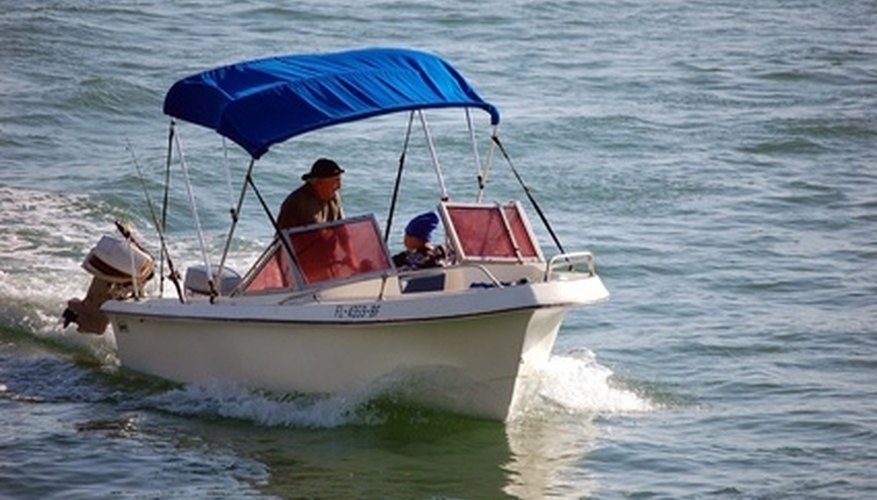
An outboard motor is an independent unit, mounted on the outside of the boat, containing the gearbox, engine and propeller. Tachometers measure the number of revolutions per minute (RPM) of the outboard motor. Tachometer installation consists of placement and properly connecting the wires
Selection
With a small screwdriver, gently press down and turn the selector knob on the back of the tachometer to the exact position that matches the number of alternator poles. Lock the selector knob by gently rotating the knob back and forth with the screwdriver.
Positioning
Before installing the tachometer, disconnect the battery. Position the tachometer no closer than 18 inches from a magnetic compass and cut a hole in the dashboard. Mount the tachometer with a back clamp.
Wiring
Use marine-approved, stranded, insulated wire, 18AWG (American Wire Gauge), or heavier. Connect a wire to the battery tachometer stud and secure with a lock washer and nut. Connect the opposite end of the wire to a 12-volt direct current (DC) circuit that activates with the ignition switch. Connect a wire to the signal tachometer stud, secure with lock washer and nut. Connect the opposite end to a wire or terminal that originates from the alternating current (AC) side of the alternator. Connect a wire to the ground tachometer stud and secure with a lock washer and nut. Connect the opposite end to the electrical ground of the boat located near or at the instrument panel. Connect the blade terminal, located near the light assembly, to the instrument lighting circuit's positive side and reconnect the battery.
Writer Bio
Billie Abbott is a freelance writer, producing articles for numerous websites, including ParentDish and Gadling. She specializes in topics about gardening, animals, parenting and travel.



